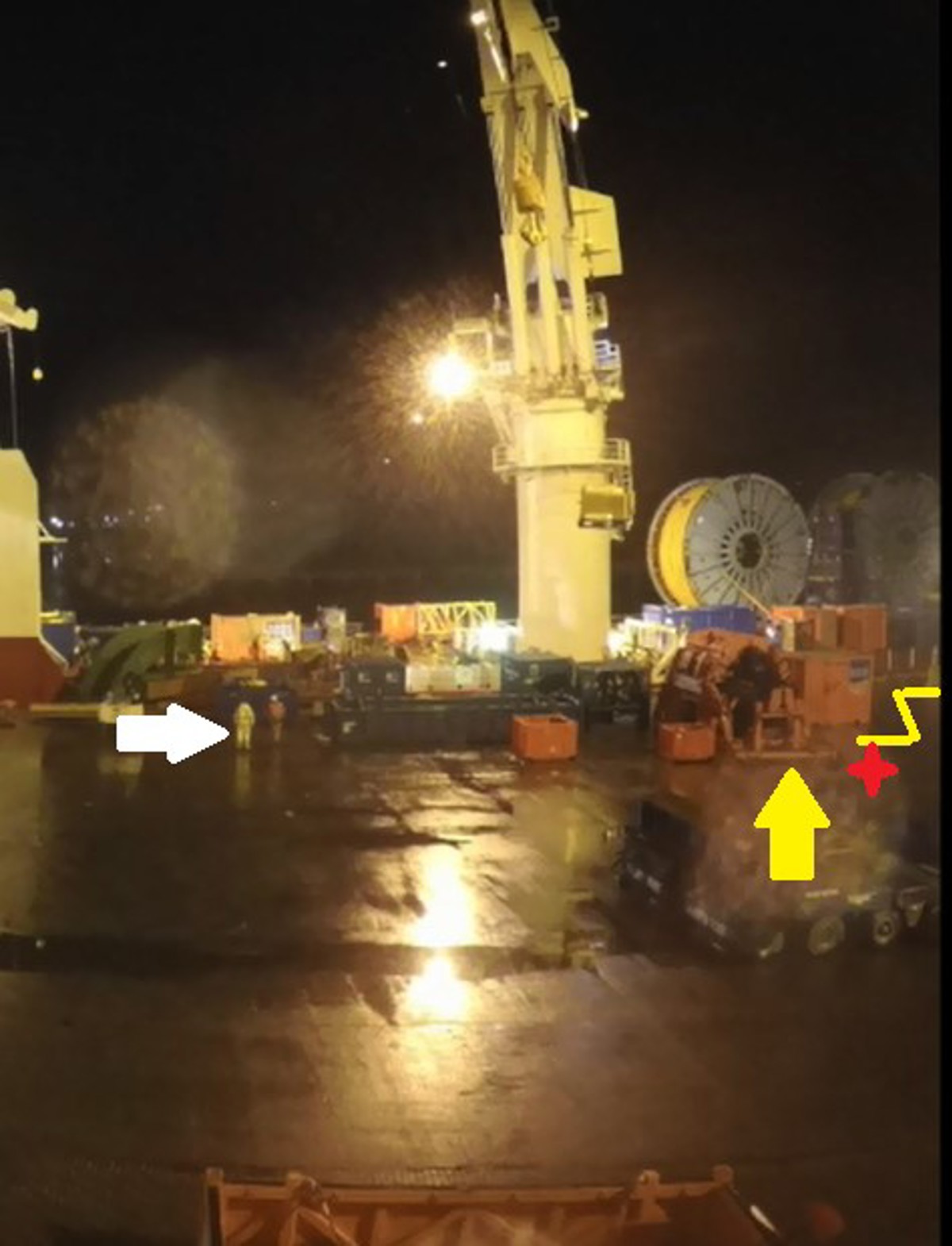LTI: Stored energy – rigger injured leg working on quayside
- Safety Flash
- Published on 2 February 2021
- Generated on 14 July 2025
- IMCA SF 04/21
- 2 minute read
Jump to:
A rigger sustained a significant leg injury while working on the quayside during lifting operations at night, when a third-party rigger was disconnecting lifts from the work vessel during demobilisation.
What happened?
A rigger sustained a significant injury to his lower left leg while working on the quayside during lifting operations.
The incident occurred during the hours of darkness, when a third-party rigger was disconnecting lifts from the work vessel during demobilisation.
The following image shows the quayside prior to the incident.
The white arrow shows the rigger in full hi-viz clothing.
The yellow line shows the route taken by him from aft of the vessel, with the red star indicating the location of the incident.
The yellow arrow denotes the location where he awaited medical attention.

Causal factors identified
- A known risky technique (this method for moving slings with a forklift) had been accepted as the norm.
- There was no port induction for vessels coming into port, explaining quayside safety requirements including hi-viz and safe walkways.
- Containers removed from the vessel blocked the safe walkway.
- The forklift driver had to take a route which gave restricted visibility of personnel.
- The rigger had removed his hi-viz jacket further reducing his visibility.
- There was reduced lighting on the quayside.
- There were simultaneous activities occurring in the area which were not properly controlled.
Our member notes that mobs and demobs often pose the most risk on a project and it is vitally important that we take all precautions necessary to protect anyone from injury during these activities.
Remain aware of what is going on around you and don’t be afraid to stop the job when required.
Members may wish to refer to:
- IMCA M203 – Guidance on simultaneous operations (SIMOPs)
- IMCA HSS032 – Guidance on safety in shipyards
Related Safety Flashes
-
IMCA SF 24/18
30 October 2018
-
-
IMCA SF 31/20
10 November 2020
-
IMCA Safety Flashes summarise key safety matters and incidents, allowing lessons to be more easily learnt for the benefit of the entire offshore industry.
The effectiveness of the IMCA Safety Flash system depends on the industry sharing information and so avoiding repeat incidents. Incidents are classified according to IOGP's Life Saving Rules.
All information is anonymised or sanitised, as appropriate, and warnings for graphic content included where possible.
IMCA makes every effort to ensure both the accuracy and reliability of the information shared, but is not be liable for any guidance and/or recommendation and/or statement herein contained.
The information contained in this document does not fulfil or replace any individual's or Member's legal, regulatory or other duties or obligations in respect of their operations. Individuals and Members remain solely responsible for the safe, lawful and proper conduct of their operations.
Share your safety incidents with IMCA online. Sign-up to receive Safety Flashes straight to your email.